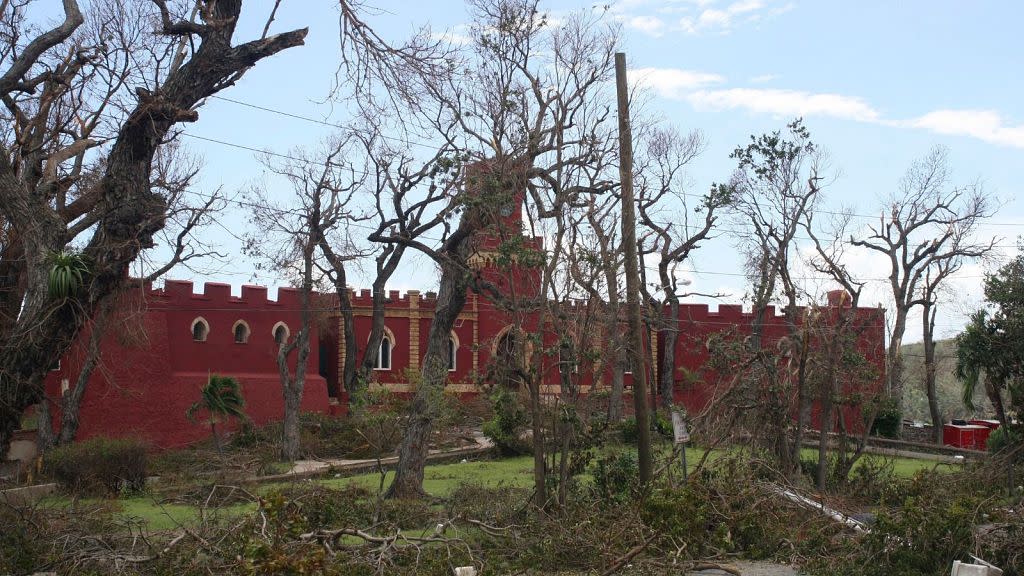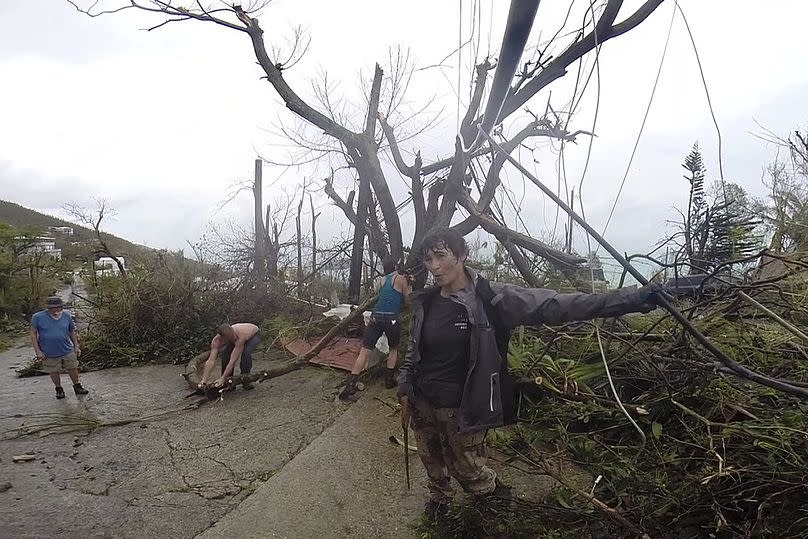These Caribbean islands are building their first artificial reef against climate-fuelled hurricanes

The US territory is seeking to become more resilient ahead of climate-fuelled storms, officials announced on Thursday.
The 18-foot (5-metre) by 12-foot (4-metre) reef will be installed near the coast around St Thomas and is expected to be completed by July, according to the islands' department of planning and natural resources.
The project will be funded by more than $760,000 (€693,000) in federal money awarded to the University of the Virgin Islands after hurricanes Irma and Maria pounded the land in 2017.
Jean-Pierre L. Oriol, the department's commissioner, said university officials are choosing the strongest specimens from more than a dozen types of coral in nurseries to attach to the artificial reef.
Norway becomes first country to back deep-sea mining despite environmental concerns
Extreme weather is turning many into climate migrants: How does it feel to face leaving home?
He said officials are working with the Woods Hole Oceanographic Institution in Massachusetts to create an environmentally sensitive design.
"The goal is to provide enhanced habitat for corals struggling from climate change and provide added shoreline protection as we work to restore natural coral reefs,” said Marilyn Brandt, project manager and a research professor at University of the Virgin Islands.
Are Atlantic hurricanes getting more powerful?

With warmer oceans serving as fuel, Atlantic hurricanes are now more than twice as likely as before to rapidly intensify from minor hurricanes to powerful and catastrophic forces, a study in October found.
In September 2023, Hurricane Lee went from barely a hurricane at 80 mph to the most powerful Category 5 hurricane with 155 mph winds in 24 hours.
In 2017, before it devastated Puerto Rico, Hurricane Maria went from a Category 1 storm with 90 mph to a staggering 160 mph winds in just 15 hours.
“We know that our strongest, most damaging storms very often do intensify very quickly at some point in their lifetimes,” said Andra Garner, a climate scientist at Rowan University in New Jersey and author of the study.
Some researchers have said that 2017’s Maria killed nearly 3,000 people directly and indirectly. “We’re talking about something that’s hard to predict that certainly can lead to a more destructive storm,” Garner said.
And this “has become more common in the last 50 years,” she added. “This has all happened over a time period when we’ve seen ocean waters get warmer.”

